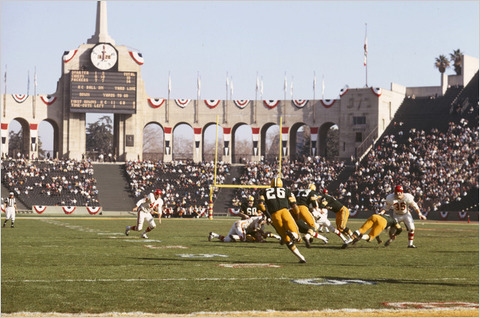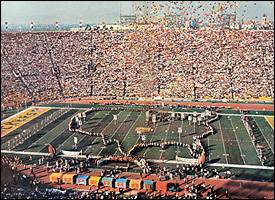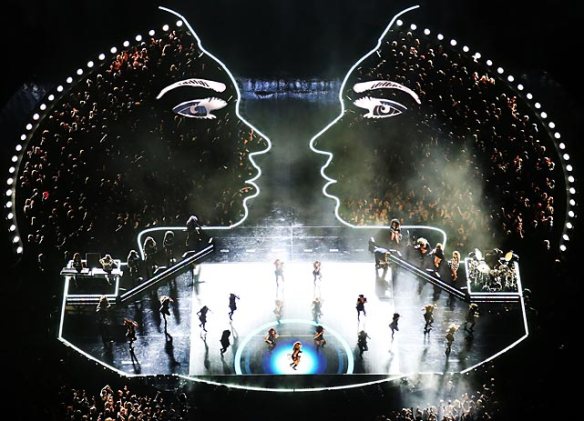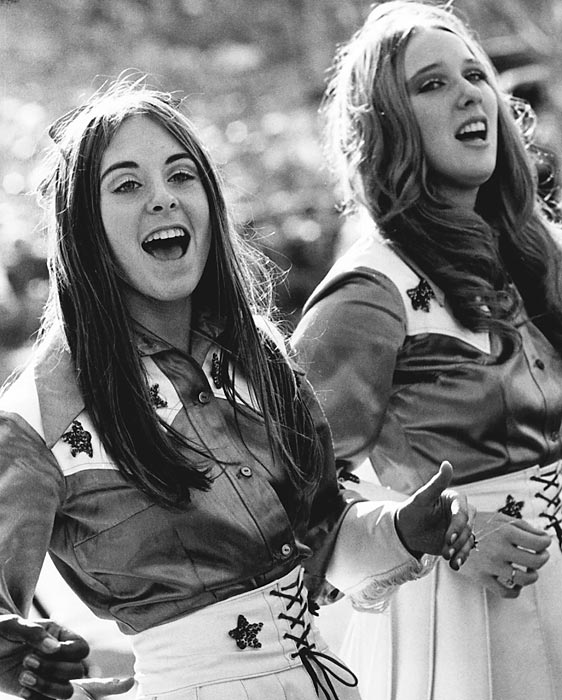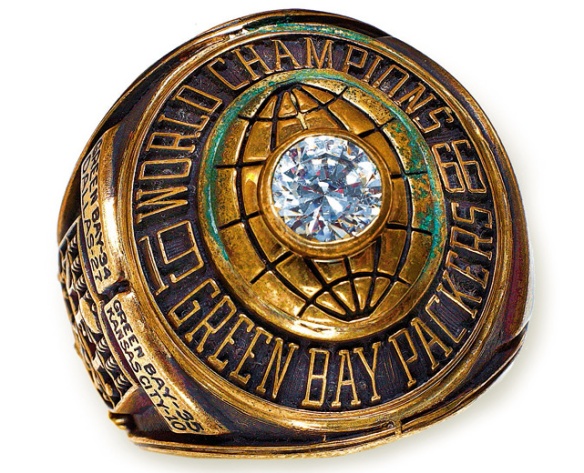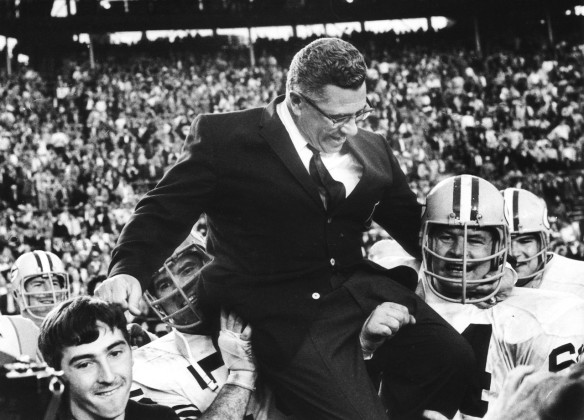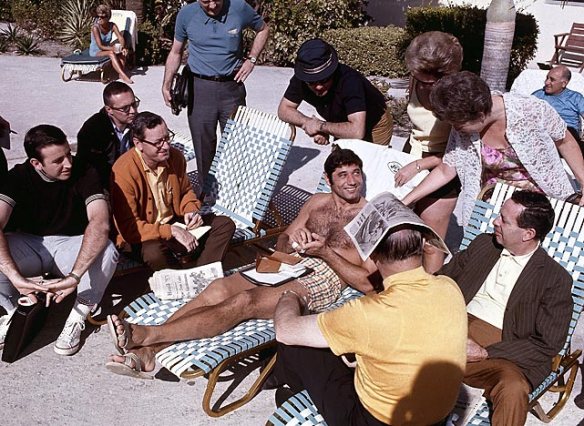As huge football fans, we here at Joseph’s Custom Clothiers excitedly watched yesterday’s Super Bowl XLVII. It turned out to be another great game, even with the half hour-long power outage! Congratulations are, of course, due to the Baltimore Ravens on their stunning win!
This 47th iteration of the Super Bowl marks a special point for the NFL. There has officially been a Super Bowl at the end of the majority of NFL seasons now. For 46 years, there was an NFL with no Super Bowl, something that’s almost impossible to think of now! After 47 years of the “Big Game,” it’s easy to take the over-the-top spectacle of the event for granted. It feels like there’s always been a Super Bowl, and that they’ve always been these huge meta events. Of course, that’s far from the truth. Last year, we posted a blog entry about the history of Super Bowl halftime shows, and how they went from Up With People and college marching bands to Madonna and Black Eyed Peas and massive pyrotechnic displays. But that’s just scratching the surface of the changes…
Going all the way back, the Super Bowl was created for a very specific reason: competition. From the NFL’s founding in 1920 up until the 1960s, there simply wasn’t another football league that could compete with the NFL’s total dominance of the sport in North America. Any league that tried was either shuttered, or absorbed into the NFL. But then along came the American Football League, or AFL, in 1960, who, instead of just trying to be another football league, tried new and unique rule changes and quirks to make themselves a legitimate companion league to the NFL. The NFL and the AFL clashed mightily for six years, before finally deciding that the endless battling for players and fans was just hurting both of their bottom lines, and that they would both be better served by merging. Combining the 16-team NFL with the 10-team AFL would take some time, though, and so a special championship game was created, to be played between the champions of both leagues, in order to get the public familiar with the idea of the two sets of teams competing directly until the actual merger in 1970.
The first Super Bowl was played at the end of the 1966 Season, between the NFL champion Green Bay Packers, and the AFL champion Kansas City Chiefs. It wasn’t known as the Super Bowl at first. It was officially the “First AFL-NFL World Championship Game.” That… Doesn’t really roll off the tongue.
But in a letter to NFL Commissioner Pete Rozelle, the Chiefs’ owner Lamar Hunt wrote, “I have kiddingly called it the ‘Super Bowl,’ which obviously can be improved upon.” The media, for obvious reasons, liked this name a lot better, and by the third game at the end of the 1968 Season, it had become official. Hilariously, Rozelle’s first choice for an official name was “The Big One.”
Over the years, the growth of the Super Bowl from a relatively minor, even ignored sports event to the multimedia juggernaut of today is truly staggering.
Super Bowls have gone from this…
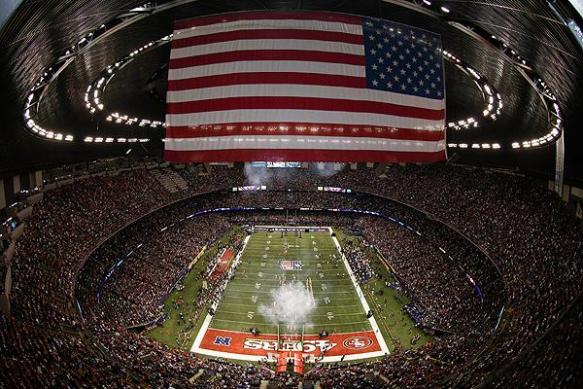 Super Bowl halftime shows have gone from this…
Super Bowl halftime shows have gone from this…
To this!
Super Bowl cheerleaders have gone from this…
 Super Bowl rings have gone from this…
Super Bowl rings have gone from this…
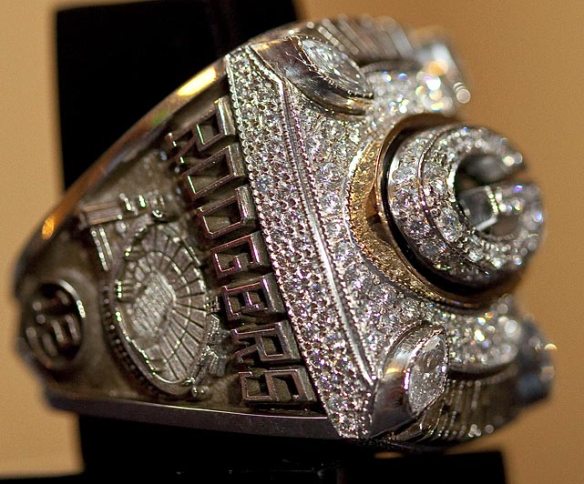 Super Bowl fans have gone from this…
Super Bowl fans have gone from this…
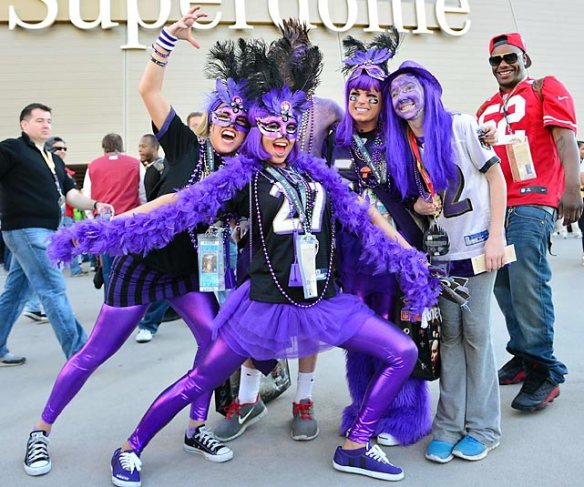 And Super Bowl winners have gone from this…
And Super Bowl winners have gone from this…
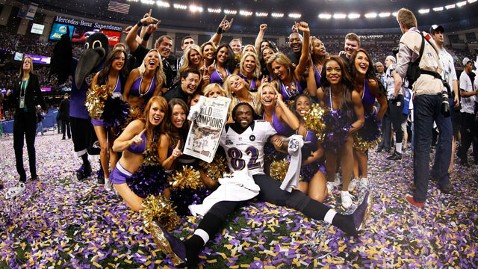 Bigger! Bolder! Louder! Everything about the game, from top to bottom, has grown in leaps and bounds over the years. The first Super Bowl couldn’t even sell out the Los Angeles Memorial Coliseum, with $12 tickets. Current tickets are usually well into the four-digit range for the nosebleeds, and are sold out far in advance.
Bigger! Bolder! Louder! Everything about the game, from top to bottom, has grown in leaps and bounds over the years. The first Super Bowl couldn’t even sell out the Los Angeles Memorial Coliseum, with $12 tickets. Current tickets are usually well into the four-digit range for the nosebleeds, and are sold out far in advance.
In many ways, the Super Bowl’s gradual explosion in popularity can be attributed to two people. One was Bill Walsh, who popularized the West Coast Offense with the 49ers in the ’80s, and turned what was before a slower, more defensive-minded game into a much more fast-paced and exciting sport, which appealed far more to the masses. The other person was Joe Namath.
His famous “guarantee” that the Jets would defeat the overwhelmingly favored Colts in Super Bowl III brought enormous attention to the game on its own. The fact that he and the Jets actually pulled it off was so shocking, it completely changed the way people thought about the AFL teams, which became the core of the new AFC, and the way people thought of the Super Bowl. People started watching because of “Broadway” Joe.
Some quirks about the game that have coalesced over the years…
- Super Bowl Sunday, practically a national holiday in its own right, is the second biggest grilling day of the year after Independence Day.
- 1.23 billion chicken wings are consumed on Super Bowl Sunday.
- 49.2 million cases of beer are drunk on Super Bowl Sunday.
- Last year’s Super Bowl XLVI was not only the most watched Super Bowl of the 47, it was the most watched broadcast in US history, with approximately 111.3 million viewers. What’s more, of the top 10 rated broadcasts in US history, nine of them are Super Bowls (the tenth was the last episode of “M*A*S*H”).
- 30-second Super Bowl ads cost $3.8 million a piece this year.
- The Pittsburgh Steelers have the most Super Bowl wins, with 6, and are tied with the Dallas Cowboys for most appearances in a Super Bowl, with 8 each.
- The Pittsburgh Steelers versus the Dallas Cowboys is the most common Super Bowl matchup, having been the focus of three Super Bowls (X, XIII, XXX)
- The Buffalo Bills have the ignominious honor of having both the most consecutive appearances in a Super Bowl, with 4 (XXV, XXVI, XXVII, XXVIII), as well as being tied for the most Super Bowl losses, namely those 4 games. The Minnesota Vikings and New England Patriots have also lost 4 Super Bowls, but not in a row! The Bills also hold the record for committing the most turnovers in a Super Bowl, with 9 in Super Bowl XXVII.
- Joe Montana was named Super Bowl MVP more than anyone else, 3 out of his 4 Super Bowl appearances (XVI, XIX, XXIV).
- The Mercedes-Benz Superdome has hosted the Super Bowl more times than any other stadium, 7 times.
- The oldest person to play in a Super Bowl was Colts kicker Matt Stover in Super Bowl XLIV, who was 42 years, 11 days old at the time.
- The biggest blowout in super Bowl history was the 49ers’ 55-10 victory over the Broncos in Super Bowl XXIV.
- The closest game in Super Bowl history was the Giants’ 20-19 victory over the Bills in Super Bowl XXV.
- While teams have won back-to-back Super Bowls 8 times, no one has ever won 3-in-a-row.
- Only 4 of the NFL’s 32 teams have never been in a Super Bowl, the Cleveland Browns, the Detroit Lions, the Houston Texans and the Jacksonville Jaguars.
- No team has ever come back from being down by more than 10 points in a Super Bowl and won the game.
- The most points scored by in one Super Bowl was in Super Bowl XXIX, when the 49ers and Chargers scored 75 points combined.
- The most attended Super Bowl was the 103,985 attendance of Super Bowl XIV, thanks to the massive capacity of the Rose Bowl.
- There has never been a shutout in the Super Bowl.
- There has never been a Super Bowl that went into overtime.
- 14 of the league’s 32 teams have yet to win a Super Bowl.
- The home team alternates year-to-year between the two Conferences, with the AFC team being the home team in odd-numbered Super Bowls, and vice versa for the NFC team.
- No team has ever played the Super Bowl in its home stadium.
- The NFC team won every single Super Bowl from Super Bowl XIX to Super Bowl XXXI.



